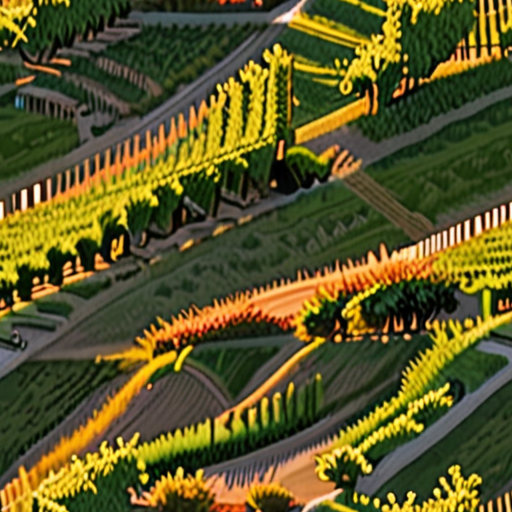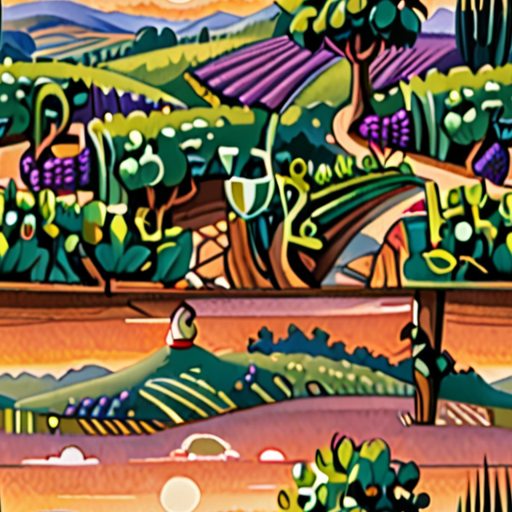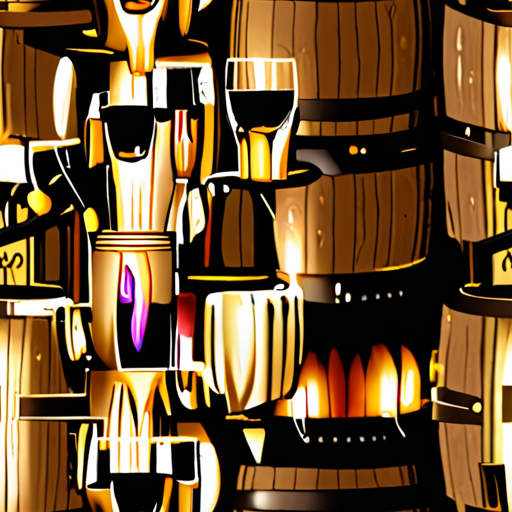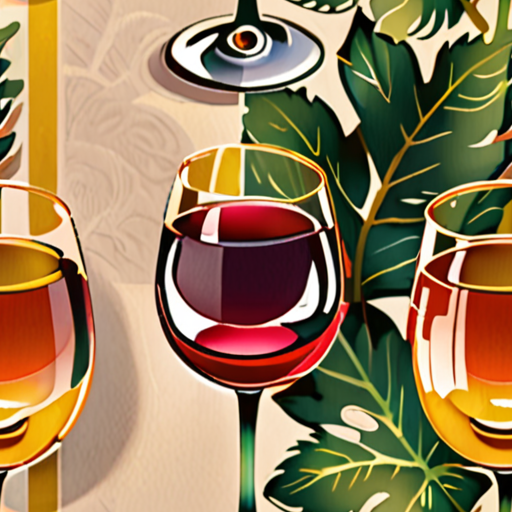Planning a wine tasting event can be a daunting task, especially if you’re new to the world of wine and hospitality. With so many variables to consider, from selecting the perfect wines to creating an engaging experience for your guests, it’s easy to feel overwhelmed. However, with the right guidance and knowledge, you can throw a memorable and successful wine tasting event that leaves a lasting impression on your attendees.

Organizing a Wine Tasting Event
To host a memorable wine tasting event, start by defining its theme, whether it’s a specific region, grape variety, or style.
- Determine the number of guests and select wines accordingly, considering a mix of red, white, and sparkling options.
- Choose a venue with a suitable atmosphere, ideally with a private room or area for the tasting.
- Select a caterer or plan the menu yourself, focusing on light bites and finger foods that complement the wines.
- Create a schedule, allowing enough time for wine pouring, tasting, and discussion.
- Prepare tasting sheets or notes for guests to record their impressions and ratings.
- Arrange for glassware, napkins, and other necessary supplies.
- Send out invitations, either digitally or through traditional mail, well in advance to ensure RSVPs.
- Consider hiring a professional sommelier or wine educator to lead the tasting and provide expertise.
- Plan for music, lighting, and ambiance to create a welcoming atmosphere.
- Have a backup plan in case of unexpected weather conditions or last-minute cancellations.
Wine Selection Tips
When selecting wines for your tasting event, consider the following:
- Vary the price point to accommodate different budgets and preferences.
- Incorporate a mix of old and new world wines to showcase diverse styles and regions.
- Include a few surprise wines to keep guests engaged and curious.
- Make sure to have a sufficient quantity of each wine, taking into account the number of guests and serving sizes.
Logistics and Timing
Pay attention to the logistics and timing of your event:
- Confirm the venue, catering, and wine delivery arrangements well in advance.
- Plan for adequate parking and transportation options for guests.
- Coordinate with vendors and suppliers to ensure timely deliveries and setup.
- Allow enough time for setup, guest arrival, and the actual tasting event.
Additional Tips
Remember to:
- Keep the event intimate and interactive, encouraging guests to ask questions and engage with the wines.
- Have a designated area for guests to take notes and record their thoughts.
- Offer water and non-alcoholic beverages for guests who may prefer not to drink wine.
- Follow local laws and regulations regarding wine sales and consumption.
The 5 Ss of Wine Tasting
When it comes to wine tasting, there are several techniques that can enhance your overall experience and help you better appreciate the nuances of a particular wine.
- See: Before taking a sip, take a moment to observe the color and clarity of the wine. Note its hue, whether it’s red, white, or sparkling, and check for any sediment or particles that may be present.
- Swirl: Hold the wine glass by the stem and gently swirl it to release the aromas and flavors of the wine. This helps to aerate the wine and allows the volatile compounds to escape, making it easier to smell and taste.
- Sniff: Bring the wine up to your nose and take a deep sniff to appreciate the aroma. Pay attention to the intensity and character of the scent, noting any dominant notes or subtle hints.
- Sip: Take a small sip of the wine and let it sit in your mouth for a moment before swallowing. Notice the texture, acidity, tannins, and flavor profile of the wine, paying attention to how they interact with each other.
- Savor: Finally, savor the finish of the wine, letting it linger on your palate for a few moments. This is where the true character of the wine reveals itself, and you can appreciate the complexity and depth of the flavors.
By following these simple steps, you’ll be able to fully appreciate the art of wine tasting and develop a deeper understanding of the wines you enjoy.
Why the 5 Ss Matter
The 5 Ss of wine tasting are essential because they allow you to engage all of your senses and truly experience the wine. By seeing, swirling, sniffing, sipping, and savoring, you’re able to gather a wealth of information about the wine’s appearance, aroma, flavor, and finish.
Tips for Improving Your Wine Tasting Skills
To get the most out of your wine tasting experience, try the following tips:
- Practice regularly to develop your sense of smell and taste.
- Experiment with different types of wine to broaden your knowledge and appreciation.
- Pay attention to the wine’s origin, vintage, and production methods to gain a deeper understanding of its characteristics.
- Don’t be afraid to ask questions or seek advice from experienced wine professionals.

What to Do at a Wine Tasting Event
Attending a wine tasting event can be a fun and educational experience, allowing you to sample various wines and learn about their characteristics.
-
Arrive Prepared
Before attending a wine tasting event, it’s essential to arrive prepared. Research the types of wines that will be available, and consider bringing a notebook and pen to take notes.
-
Start with a Clean Slate
When sampling wines, start with a clean slate by rinsing your palate with water between tastings. This will help you appreciate the flavors and aromas of each wine.
-
Pour and Smell
When presented with a wine, ask the server to pour a small amount into your glass. Take a moment to smell the wine, noticing its aroma and bouquet.
-
Taste and Evaluate
Next, take a sip of the wine and evaluate its flavor profile. Consider the wine’s acidity, tannins, and body, as well as its overall balance and finish.
-
Ask Questions
If you have questions about a particular wine, don’t hesitate to ask the server or winemaker. They can provide valuable insights and information about the wine’s production process and characteristics.
-
Take Notes
As you taste each wine, take note of its characteristics, including its color, clarity, and viscosity. Also, record your impressions of the wine’s flavor profile and overall quality.
-
Enjoy the Experience
A wine tasting event is not just about sampling wines – it’s also about enjoying the company of others who share your passion for wine. Take time to mingle and chat with fellow attendees, and don’t be afraid to ask questions or seek advice.
By following these steps, you’ll be able to fully appreciate the wines on offer and make informed decisions about which ones you enjoy the most.
Additional Tips
Consider the following additional tips when attending a wine tasting event:
-
Don’t Overdo It
Remember to pace yourself and don’t overdo it when sampling wines. It’s better to take smaller sips and enjoy each wine slowly rather than rushing through the tasting.
-
Be Respectful
When attending a wine tasting event, be respectful of the winemakers and servers who are working hard to provide you with a great experience. Ask questions politely and refrain from making negative comments about the wines.
-
Have Fun
Most importantly, remember to have fun! A wine tasting event is a unique opportunity to learn about wine and connect with others who share your interests.

How Much Do Wine Tasting Events Cost?
The cost of wine tasting events can vary greatly depending on several factors, including the type of event, location, and duration.
- Low-end wine tastings: These events can cost as little as $20-$30 per person, often featuring a selection of entry-level wines and basic food pairings.
- Mid-range wine tastings: Expect to pay between $25-$50 per person for these events, which may offer a wider selection of wines and more substantial food pairings.
- High-end wine tastings: Luxury wine tastings can cost upwards of $100-$200 per person, featuring premium wines and gourmet cuisine.
Some popular wine tasting destinations and their approximate costs include:
- Napa Valley : $50-$150 per person
- Sonoma County : $40-$120 per person
- Walla Walla Valley : $30-$90 per person
When planning a wine tasting event, consider the following factors to get the most value for your money:
- Duration: Longer events often offer more wine selections and better value.
- Location: Urban wine tastings tend to be pricier than rural ones.
- Food pairings: Opt for events that include substantial food pairings for a more satisfying experience.
As a wine enthusiast, I recommend exploring local wine regions and attending events that cater to your interests and budget.
Popular Wine Tasting Destinations
- Napa Valley
- Sonoma County
- Walla Walla Valley
- Paso Robles
- Willamette Valley
Wine Tasting Tips
- Arrive early to secure a spot at popular events.
- Bring a designated driver or plan for transportation.
- Don’t be afraid to ask questions or seek recommendations from event staff.
Are Wine Tasting Rooms Profitable?
The profitability of wine tasting rooms has been a topic of interest among wineries and wine enthusiasts alike.
- In recent years, the wine industry has experienced steady growth, with many wineries reporting increased revenue from direct-to-consumer (DTC) sales.
- A 2024 survey report revealed that the average sales value for DTC businesses in 2023 was up slightly compared to the previous year, while sales volume decreased by less than 1%.
However, regional variations played a significant role in determining the success of wine tasting rooms. Some regions reported a 1% increase in sales value and a 7% increase in sales volume, indicating a positive trend.
Factors Contributing to Profitability
-
Effective Marketing Strategies:
- Wineries that invested in targeted marketing campaigns, social media engagement, and email marketing saw significant increases in visitor numbers and sales.
- These efforts helped to build brand awareness, drive traffic to the tasting room, and ultimately boost revenue.
-
Quality of Experience:
- Tasting rooms that offered exceptional customer service, educational experiences, and memorable events created a loyal customer base and encouraged repeat visits.
- This focus on quality led to increased customer satisfaction, positive word-of-mouth, and ultimately, higher sales.
-
Diversification of Offerings:
- Wineries that diversified their offerings, such as introducing food pairings, live music, or special events, attracted a wider audience and increased average ticket prices.
- This diversification strategy helped to reduce dependence on traditional wine sales and created new revenue streams.
Best Practices for Success
To maximize profitability, wine tasting rooms should focus on the following best practices:
- Develop a robust online presence through social media and email marketing.
- Invest in targeted marketing campaigns to attract new visitors.
- Offer exceptional customer service and create memorable experiences.
- Diversify offerings to attract a wider audience and increase average ticket prices.
Conclusion
While the profitability of wine tasting rooms can vary depending on regional factors and individual winery strategies, effective marketing, quality of experience, and diversification of offerings are key drivers of success.

Why Wine Tastings Can Be So Expensive
The cost of attending a wine tasting can sometimes seem steep, but there are several factors that contribute to these expenses.
- Staffing Costs
- Inventory Management
- Facility Maintenance
- Marketing and Promotion
- Regulatory Compliance
Wine tastings require a significant amount of staff time, including pouring, educating, and interacting with guests. Employing knowledgeable staff to manage the tasting room and provide exceptional service comes at a cost.
Wineries need to carefully manage their inventory levels to ensure that they have enough wines available for tastings, while also minimizing waste and excess stock. This requires ongoing investment in inventory management systems and processes.
The facilities used for wine tastings, such as the tasting room and outdoor spaces, require regular maintenance to ensure they remain clean, safe, and welcoming for guests. This includes tasks like cleaning, repairs, and upgrades.
Effective marketing and promotion are crucial for attracting visitors to wine tastings. This involves investing in advertising, social media, email marketing, and other promotional activities to reach potential customers.
Wineries must comply with various regulations, such as those related to food safety, health codes, and environmental standards. Meeting these requirements can involve significant costs, including training, equipment, and certification.
Additional Expenses
In addition to these core costs, wineries may also incur expenses related to:
- Equipment and supplies, such as glasses, corkscrews, and wine keys
- Insurance premiums to protect against liability and property damage
- Utilities, such as electricity, water, and gas, to power the tasting room and facilities
- Waste disposal and recycling services to minimize the winery’s environmental impact
Conclusion
While wine tastings can seem expensive, the costs involved are largely driven by the need to provide high-quality experiences for guests, while also managing the operational and regulatory demands of running a successful winery. By understanding these factors, wine enthusiasts can appreciate the effort and expense that goes into creating memorable wine tastings.
0 Comments